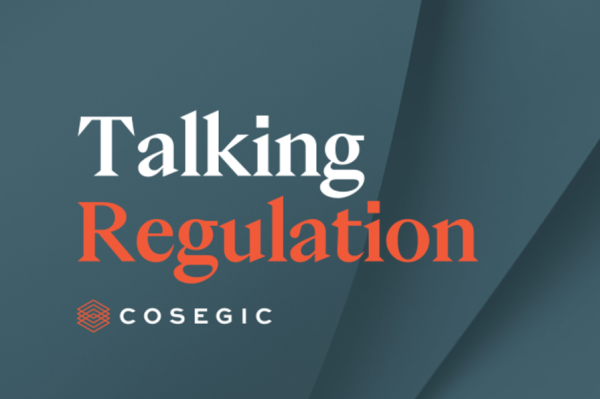Dedicated readers (there must be some?!), may recall my article on the implications of the Appeal Court judgment in the Ipagoo case which the FCA lost, where I said that, in that instance the court had decided that while it may walk like a duck and quack like a duck, in that case it’s not a duck.
Recent communications from the FCA to payments firms on what constitutes a “current account” have recently reminded me of that very case, although this time it is the FCA making the distinction, rather than the courts. A current account is probably the core payment service product that most consumers would use on a day to day basis, so it is important that firms looking to offer payment account products understand the FCA’s concerns.
Going right back to the first Payment Services Directive (PSD), one of the very first aims of the European Commission, was to enable non-bank payment service providers to compete with banks in the provision of payment services, an aim which was continued in PSD2. It is notable that the term “current account” does not appear in either PSD2 or the PSRs 2017. It is a term used by the FCA in the Approach Document guidance, but only in terms of pointing out where the relevant provisions apply. 17.13 in the Approach Document says:
"A ‘payment account’ means ‘an account held in the name of one or more payment service users which is used for the execution of payment transactions.’ We provide guidance on the definition of payment account in PERG 15.3. Under this guidance, a payment account can include, but is not limited to, current accounts, e-money accounts, flexible savings accounts, credit card accounts and current account mortgages."
This therefore identifies that “current account” is a type of “payment account” and, of course, Electronic Money Institutions (EMIs) and Payment Institutions (PIs) can have permissions to operate payment accounts.
The only definition of “current account” in the FCA Handbook, relates specifically to CONC App 1 and is:
“an account under which the customer may, by means of cheques or similar orders payable to the customer or to any other person or by any other means, obtain or have the use of money held or made available by the person with whom the account is kept and which records alterations in the financial relationship between the said person and the customer.”
Again you will note that it does not mention being with a bank or credit institution.
In the Banking Conduct of Business Sourcebook (BCOBS), there are 321 mentions of “current account”, but the term is never defined. “Personal current account is defined as:
“an account, other than a current account mortgage or a premium service account, which is a payment account within the meaning of the Payment Accounts Regulations”
In the recent FCA Webinar ‘Financial promotions – why it matters to get it right’, run by their High Growth and Early Oversight Unit (and which I would recommend anyone to take a look at), I was interested to hear the FCA specifically call out “current accounts” offered by E-Money Institutions as being something that could be misleading, on the basis that customers are likely to presume that if an institution is offering a current account, the funds held in it will be covered by the Financial Services Compensation Scheme (FSCS).
When I asked the question, I was relieved to hear that this did not mean that the FCA was prohibiting EMIs from using the term current account, but that if they do, it must be accompanied by a prominent notice explaining that safeguarding, rather than FSCS cover applies.
Those with long memories might recall that in the FCA’s Finalised Guidance issued in July 2020, they said “Payment and e-money firms should also avoid suggesting to customers that the relevant funds they hold for them are protected by the Financial Services Compensation Scheme.”
As at 25 November, the FCA Register showed 227 AEMIs and 31 Small EMIs, and Nicholas Webb at our Payments Regulatory Forum on 1 November noted that around 1 in 10 E-money holders used their E-money accounts as their main payment account. One would imagine that many, if not most, would therefore think of it as being their “current account.”
Increasingly customers are being offered “virtual accounts” with sorting codes, account numbers and IBANs through the EMI having a white label arrangement with a bank. The point of this is to make the functionality as indistinguishable from a bank current account as possible, which is entirely in line with the initial aims of the Payment Services Directive to enable non-banks to compete with banks in the provision of payment services. However, the FCA’s concern about the protections offered by safeguarding and the dependence on individual firms being fully compliant to ensure that the intended protection is in place, means that they are worried that customers may infer from the term “current account” and the bank style functionality that they have bank level protection. This may be exacerbated by the common use of the term “neobank” to refer to such providers.
To repeat the phrase from the article I mentioned in the introduction, from a customer’s point of view it may walk like a duck and quack like a duck, but from a customer protection point of view it ain’t a duck, and the FCA expect firms to make that crystal clear, so any EMI in this market should be reviewing their customer communications to make sure that this is the case for them.
Related resources
All resources
Talking Regulation: Regulators revise Memorandum of Understanding in relation to payments in the UK

CP25/15: A regime for cryptoasset firms: current developments

FCA authorisation for Digital Finance Firms: Do’s and don'ts

Webinar: What’s the risk? Best practices for conducting a Financial Crime Risk Assessment

